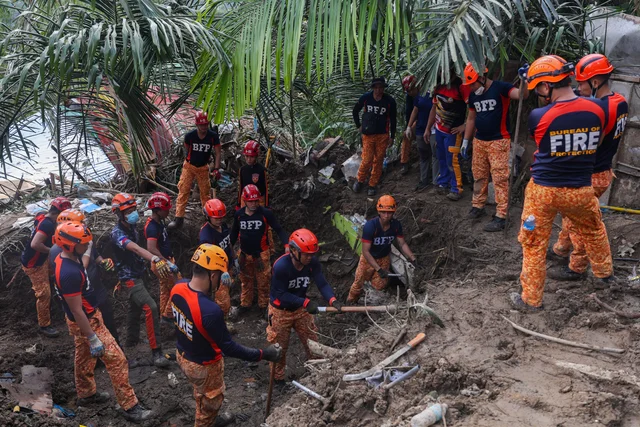
Typhoon Kalmaegi made landfall in Vietnam’s storm-weary central region late Thursday, forcing mass evacuations as the country braced for one of the world’s deadliest cyclones this year.
The powerful storm carved a devastating trail across the Philippines earlier in the week, killing at least 140 people and leaving 127 missing amid catastrophic flooding.
Vietnam’s environment ministry said the typhoon roared ashore with sustained winds of up to 149 kilometres (92 miles) per hour and significantly stronger gusts, tearing through communities already battered by more than a week of record-breaking rains.
“The wind is so strong — nothing can withstand it,” said Vu Van Hao, 48, as he surveyed shattered glass strewn across the lobby of a hotel in Gia Lai province. “We have never experienced anything like this. It’s a natural disaster — what can we do?”
The storm struck while central Vietnam was still reeling from floods and unprecedented rainfall that killed at least 47 people and submerged historic UNESCO-listed towns.
“This is a massive typhoon with terrifying destructive power,” warned Pham Anh Tuan, a senior provincial official in Gia Lai, where state media reported that more than 7,000 people had already been evacuated.
In Quy Nhon Nam, an AFP reporter watched officials go door-to-door urging residents to flee before the storm hit. Dozens sought shelter in a local school, among them elderly women and children carrying blankets, pillows and mats.
“I’m not young anymore, and I won’t risk my life,” said 56-year-old Tran Thi Nghia, who left her single-storey home after authorities insisted she evacuate.
Vietnam sits in one of the world’s most active typhoon zones, typically enduring around 10 tropical storms each year. Kalmaegi, however, is already the country’s 13th major storm of 2025. Scientists say human-driven climate change is intensifying such extreme weather events.
Earlier in the week, Kalmaegi slammed into the central Philippines, pummelling Cebu and Negros islands before sweeping back out to sea.
Floodwaters described as “unprecedented” submerged towns, swept away cars and riverside shanties, and tossed massive shipping containers like toys.
In Liloan near Cebu City — where at least 35 bodies have been recovered — AFP journalists found cars stacked on top of one another, roofs ripped from homes, and residents clawing through thick mud in search of missing belongings.
President Ferdinand Marcos declared a national state of calamity on Thursday, enabling the government to release emergency funds and impose price controls on essential goods. More than 500,000 Filipinos remain displaced.
Scramble for Safety in Vietnam
Ahead of Kalmaegi’s landfall, Vietnamese President To Lam cut short a session of the Communist Party’s central committee, urging officials to return home to lead local emergency responses.
Many residents fled low-lying areas on motorbikes, carrying water, clothing and basic supplies. Others prepared to ride out the storm.
“I’ve only experienced one major typhoon in my life,” said Thanh, a 53-year-old man preparing to shelter in his concrete house. “I’m mostly afraid of the heavy rains that could bring huge floods.”
Schools were closed across Gia Lai and Quang Ngai provinces, and at least five airports shut down. Dozens of flights were diverted.
The recent deluge transformed the ancient towns of Hue and Hoi An into flooded canals, submerging tens of thousands of homes. One 24-hour downpour dumped 1.7 metres (5 feet 6 inches) of rain — a national record.
With more than 3,200 kilometres of coastline and 2,300 rivers, Vietnam is acutely vulnerable to flooding.
Natural disasters have already killed or left missing 279 people this year, causing over $2 billion in damage, according to national statistics.



